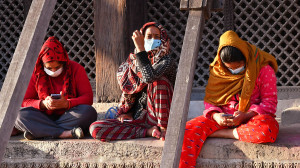Entertainment
The art of cartoon
On January 7, 2015, two armed gunmen attacked the French satirical magazine Charlie Hebdo, apparently irked by a cartoon of Muslim Prophet Muhammad, which the magazine published two years ago.
On January 7, 2015, two armed gunmen attacked the French satirical magazine Charlie Hebdo, apparently irked by a cartoon of Muslim Prophet Muhammad, which the magazine published two years ago. For artist and chancellor of Nepal Academy of Fine Arts, Ragini Upadhyay, the gruesome event “was heinous, but also underscored the power of the brush, of the cartoons.”
Speaking at the recently-held cartoon exhibition, organised by Cartoonist [cartoonists’ (sic)] Club of Nepal, in Nepal Art Council, Upadhyay said that, while a painting focuses on aesthetics, a cartoon goes beyond that “for it uncovers reality with wit and humour, and might also go on to bring a revolution in the society.”
The exhibit had a cartoon work on Upadhyay herself, created by artist Devendra Thumkeli. About which, Upadhyay said, “I found that the exhibit has a cartoon work on myself. I hope the cartoonist comes up with a better one next time around. It is good but still...”
The exhibition, which concluded on Wednesday, had on display cartoons created during a workshop, organised by the Club, and also cartoons submitted by amateur cartoonists. The exhibition featured cartoon works on noted cultural figures, such as Maha Jodi, Dhurmus-Suntali, Narayan Gopal, Jhamak Kumari Ghimire, Narayan Wagle, and Amrit Gurung, among many others.
The organisers said that the workshop was organised to encourage cartoonists to come up with cartoons on people apart from run-of-the-mill caricatures on the political leaders.
“Nepali cartoon has come a long way in the past few decades but, irrespective of the rise in number, the works are really weak,” said cartoonist Abin Shrestha, adding, “The cartoons are getting ample space in newspapers which is humbling—a cartoon is at once journalism and an art.” Shrestha, who is also the chairperson of Cartoonist Club of Nepal, went on, “But still, there are misconceptions regarding the art form in Nepal. A cartoon satirises, a cartoon doesn’t humiliate—and there is a fine line in between.
“In a cartoon, there are two aspects; one is the thematic, the other, artistic. We, Nepali cartoonists, are doing well on the thematic aspect, but still lag behind in the artistic aspect. I believe, workshops like this and discussions among ourselves will be helpful in promoting Nepali cartoons,” Shrestha concluded.




 10.12°C Kathmandu
10.12°C Kathmandu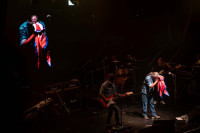


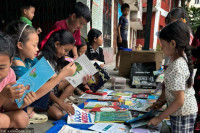
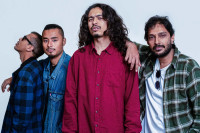
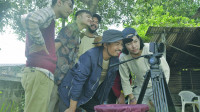


%20(1).jpg&w=300&height=200)

